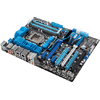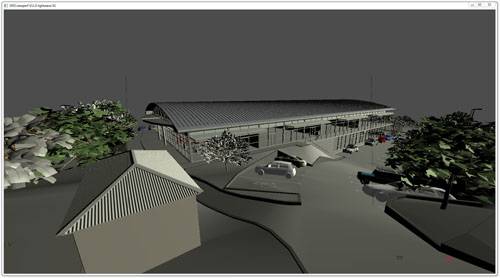- Qualcomm Launches Snapdragon 4 Gen 2 Mobile Platform
- AMD Launches Ryzen PRO 7000 Series Mobile & Desktop Platform
- Intel Launches Sleek Single-Slot Arc Pro A60 Workstation Graphics Card
- NVIDIA Announces Latest Ada Lovelace Additions: GeForce RTX 4060 Ti & RTX 4060
- Maxon Redshift With AMD Radeon GPU Rendering Support Now Available
Intel P67 Roundup: ASUS, GIGABYTE, Intel & MSI

We’ve been a little short on motherboard content lately, so to kick things back into action we’re taking a look at four P67-based motherboards at once – all benchmarked using our newly revised test suite. The boards we’re looking at are the ASUS P8P67 Deluxe, GIGABYTE P67A-UD4, Intel DP67BG and MSI P67A-GD65.
Page 12 – Overall System: Autodesk 3ds Max 2011 & SPECviewperf 11
Autodesk offers a mind-blowing number of software production tools, but for those who are looking to build complex 3D models and scenes, it’s 3ds Max that stands at the forefront. First launched in 1995 as ‘3D Studio Max’, the program has since become a standard within some important industries, including architecture design, gaming development and film production.
For our test, we render a scene commissioned from Bulgarian artist Nikola Bechev, entitled “Naomi: The Black Pearl”. The woman is comprised of over 7,000 polys with the entire scene totaling just over 106,000 vertices. Three light sources are used, with the entire scene being enhanced with HDR and ray tracing techniques, and subsurface scattering applied to certain objects. The scene is rendered at 1800×3600 as a production release, with HQ detail levels being used all-around.

ASUS again has a clear advantage thanks to its innate overclock, while the others perform just about the same. This time, it’s MSI to fall into last place, with GIGABYTE leading the stock-clocked pack.
SPECviewperf 11
Where PCMark benchmarks using tests that the common user can relate to, such as watching a video or editing photos, SPECviewperf caters to workstation users who run some of the most complex software on the planet. The test results produced with SPECviewperf can prove a benefit to those doing 3D character animation, architectural and industrial design, and those who use visualization software to help benchmark models or pinpoint issues.

It’s a bit harder to single out a top-performer when dealing with eight sets of results, but overall, GIGABYTE again comes out on top, aside from ASUS which has an advantage due to a higher CPU clock speed.
Support our efforts! With ad revenue at an all-time low for written websites, we're relying more than ever on reader support to help us continue putting so much effort into this type of content. You can support us by becoming a Patron, or by using our Amazon shopping affiliate links listed through our articles. Thanks for your support!







